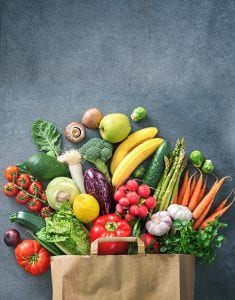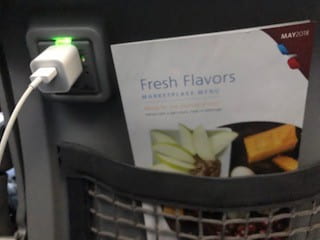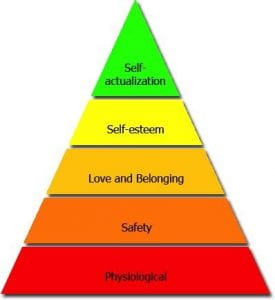This article was first published on LinkedIn on May 5, 2020,
and featured in SENGvine May 2020 Issue.
 Unmasking Giftedness
Unmasking Giftedness
When I think of unmasking giftedness, I think of the vitality gained from an intake of a collective and variety of fresh fruits and vegetables. The process of unmasking giftedness is as beneficial as maximizing the unique nutrients that each fruit or vegetable provide. Offering four (4) guiding principles for unmasking giftedness, I address the dilemma of understanding how one should feel about his or her giftedness, and his or her relationship with the gifted community at large.
Barry Gelston (2019), in his Gifted Home Forum (GHF) presidential message, “The Gifted Community”, asked the question: “How do we find common ground where our commonality is our uniqueness, our individual differences from the norm?”. Gelston went on to state that “gifted people go through a life-cycle of changes that need to be understood within the context of giftedness”, and offered some example questions to consider “as a complete overlay to norm-centric people”. Using a few of those questions as the framework, I would like to address this dilemma of understanding how one should feel about his or her giftedness, and his or her relationship with the gifted community at large.
How do I learn to understand why and how we are different?
I often recite the common phrase, “Different is not deficit!” which is echoed by many scholars whose work centers around diversity and multiculturalism. It reminds us of the strength and benefit of being different. It is our differences – opinions, experiences, perspectives, and so on – that give strength to a common community, goal, and/or cause. In one of my favorite movies, Divergent (adapted from the book of the same name), the protagonist exhibits characteristics of divergence, empowering her to excel in simulated real-life problems, solving them in unusual ways. It is in her difference from the norm that she contributes most to her community. More closely related to identification, E. Paul Torrance, the developer for the Torrance Tests of Creative Thinking (TTCT), recognized this same strength of divergence as a characteristic of giftedness. TTCT, a test of creativity[1], originally involved simple tests of divergent thinking and other problem-solving skills.
It is my belief that our unique talents and gifts will make room for us. They are tied to our service-driven purpose – that which is meant to be a part of our legacy. If you find yourself in a situation where you are fixated on some issue, problem, or innovative idea, but find that others may not find it as critical, then assume that it is your assignment, a part of your purpose! This is even more important to note when “in a crowded space of saturated talent, you may sometimes question how best to use [your gifts] … you need only to pay attention to the space that is constantly being cleared for you; that place that gives you life”[2].
“in a crowded space of saturated talent, you need only to pay attention to the space that is constantly being cleared for you … your gifts will make room for you.”
How do we as adults find our own tribe? How do we find our place in the workforce?
When I decided to leave the corporate world to teach, my quest was always to find the space where I could make the most difference. During my final years of teaching high school, I often found myself in situations where I felt that either my contributions were not appreciated or did not match the mission and vision of the current administration. Conflicted with where I belonged, I took a leap into higher education. That journey started with completing my Ph.D. in psychology with a major emphasis in gifted and creative education and minor in quantitative research methods. During that journey is when I felt most “at home”. I felt like I was among not just a few that thought like me but a whole tribe of people with the same vision of excellence and mission to guide gifted learners toward maximum potential.
Your spirit, or inner voice, will be at peace when you have found your tribe. When your “soul” is not at rest, inner turmoil[3]persists to let you know you are not in the right place at that particular time in your life.
Who are the professionals that get us and can help us through life?
I developed and teach a graduate course at Texas State University entitled, Mentoring Across the Lifespan[4]. In this class we discourse at great lengths the concept of talent development at different stages of life. As a common understanding, we first agree that mentoring, or guidance across the lifespan, is not reserved for “professionals”. All those that come in contact with a gifted individual are in a position to help them through life. However, those that are most effective, or that “get us”, are those that recognize the development of their own multicultural, talented self. Consequently, perceived mentor effectiveness indirectly impacts mentees’ academic and career outcomes as well as mentee’s self-efficacy beliefs[5].
At the core of mentoring is the relationship – a relationship that can be categorized in four phases: (1) preparing one-self for the mentoring relationship, (2) negotiating the parameters and mission of the relationship, (3) empowering the mentee toward agency and self-efficacy, and (4) closing, or redefining, the mentoring relationship. I would further assert that these phases are appropriate for any healthy relationship.
How do we raise gifted kids who struggle to find their tribe?
In 2018, I introduced a culturally responsive model for STEM identity development[6]. In this model, I maintained that students of color, in their journey of scholarly identity, ponder over four reflective questions as they decide whether or not to develop and pursue a STEM identity or STEM career. I would submit that these same four questions, replacing “STEM” with “gifted identity”, are the basic questions that gifted students might ponder over as they contemplate their place in society:
1. Do I belong in [a gifted programming/ community]? (Reflective Identity)
2. Can I succeed [as a gifted student]? (Competence/Ability)
3. Do I want to succeed [with a gifted identity]? (Value/Interest)
4. What must I do to succeed [in gifted and talented culture]? (Assimilation)
The answers to these questions have real implications for those of us that have dedicated our time and expertise in guiding the experiences of gifted individuals. It is our duty to foster positive responses to such questions, so that the gifted student learns to “love the skin s/he is in” – embracing his or her differences as strengths, finding his or her voice, and possessing confidence in valued contribution to the gifted community at large.
In summary, four principles are offered in understanding how one should feel about his or her giftedness, and his or her relationship with the gifted community at large:
- In a crowded space of saturated talent, pay attention to the space that is constantly being cleared for you – that place that gives you life. Your gifts will make room for you.
- Your spirit, or inner voice, will be at peace when you have found your tribe. When your “soul” is not at rest, [inner] turmoil persists to let you know you are not in the right place at that particular time in your life.
- Self-check your relationship. Act accordingly. Relationships within a community can be categorized in four non-linear phases: (1) Preparation, (2) Negotiation, (3) Empowerment, and (4) Closing, or Redefining.
- Be reflective as you contemplate your place in society. Find affirmative ways to know, in fact, that: (a) you do belong, (b) you can succeed, (c) your gifts are valuable, and (d) there is benefit to being different – it gives strength to the community.
[1] Creativity is measured by four scales (1) fluency, (2) flexibility, or difference of responses, (3)originality, or statistical rarity of responses, and (4) elaboration
[2] Dr. Kristina Henry Collins’ LinkedIn page, accessed December 16, 2019, https://www.linkedin.com/in/dr-kristina-henry-collins/.
[3] Leon F. Seltzer, “What Causes You Inner Turmoil? When You’re at War with Yourself, There’s Generally a Good Reason”, Evolution of Self (blog), April 15, 2015, https://www.psychologytoday.com/us/blog/evolution-the-self/201504/what-causes-you-inner-turmoil.
[4] Kristina Henry Collins, “CI 5383 Mentoring Across the Lifespan Course”, STEM Mentoring Matters: Changing the F.A.C.E. of STEM One Mentee at a Time, accessed on December 16, 2019, https://mentoringmatters.wp.txstate.edu/ci-5383-mentoring-across-the-lifespan-course/.
[5] Angela M. Byars-Winston, Janet Branchaw, Christine Pfund, Patrice Leverett & Joseph Newton, “Culturally Diverse Undergraduate Researchers’ Academic Outcomes and Perceptions of Their Research Mentoring Relationships”, International Journal of Science Education 37, no 15 (2015): 2533-2554. doi: 10.1080/09500693.2015.1085133.
[6] Kristina Henry Collins, “Confronting Colorblind STEM Talent Development: Toward a Contextual Model for Black Student STEM Identity. Journal of Advanced Academics, 29, no 2 (2018): 143-168. doi:10.1177/1932202X18757958.

 With its Cajun roux base, Gumbo traditionally consists of what Louisianians call the “holy trinity of vegetables” – celery, peppers, and onions – along with meats and additional dressings. Featured with the music of Pomp and Circumstance and represented by its own “trinity” of sorts, graduation ceremonies include (1) a processional – a separation from existing status in society, (2) an inculcation – a personal transformation, and (3) a recessional – a return to society with a new status.
With its Cajun roux base, Gumbo traditionally consists of what Louisianians call the “holy trinity of vegetables” – celery, peppers, and onions – along with meats and additional dressings. Featured with the music of Pomp and Circumstance and represented by its own “trinity” of sorts, graduation ceremonies include (1) a processional – a separation from existing status in society, (2) an inculcation – a personal transformation, and (3) a recessional – a return to society with a new status.

